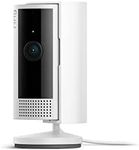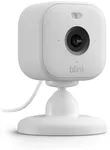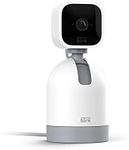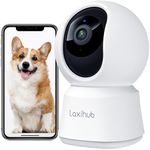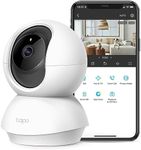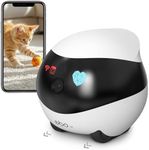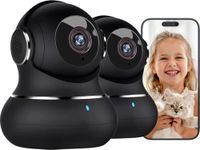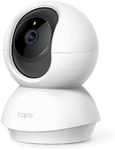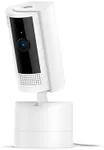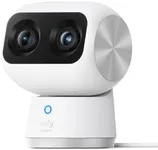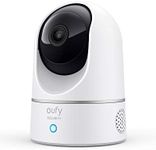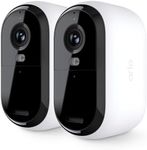Buying Guide for the Best Indoor Cameras
Choosing the right indoor camera can make a big difference in how secure and comfortable you feel at home. The best approach is to think about where you want to place the camera, what you want to monitor, and how you plan to use the footage. Consider whether you want to check in on pets, keep an eye on kids, or simply monitor entrances. Understanding your needs will help you focus on the features that matter most for your situation.ResolutionResolution refers to the clarity and detail of the video the camera captures. Higher resolution means a sharper image, making it easier to recognize faces or details in the footage. Common resolutions include 720p (HD), 1080p (Full HD), and 2K or 4K (Ultra HD). For basic monitoring, 720p may be enough, but for clearer images and better identification, 1080p or higher is recommended. If you want to see fine details or cover larger rooms, go for higher resolutions, but remember that higher resolution videos take up more storage space.
Field of ViewField of view describes how wide an area the camera can see. It is usually measured in degrees. A narrow field of view (around 90 degrees) focuses on a specific spot, while a wide field of view (120 degrees or more) covers more of the room. If you want to monitor a small area like a doorway, a narrower view is fine. For larger spaces or open rooms, a wider field of view helps you see more with a single camera.
Night VisionNight vision allows the camera to record clear video in low light or complete darkness, using infrared LEDs. The quality and range of night vision can vary, with some cameras seeing up to 10 feet and others up to 30 feet or more. If you need to monitor rooms at night or in dim conditions, look for cameras with strong night vision capabilities. Consider the size of the area you want to cover in the dark when choosing the right range.
Motion DetectionMotion detection means the camera can sense movement and alert you or start recording when something happens. Some cameras offer basic motion detection, while others allow you to set specific zones or adjust sensitivity. If you want to avoid false alarms from pets or passing cars, look for cameras with customizable motion zones or sensitivity settings. Think about what kind of activity you want to be notified about and choose accordingly.
Audio FeaturesAudio features include the ability to hear what’s happening (microphone) and sometimes to speak through the camera (two-way audio). Listening can help you understand what’s going on, while two-way audio lets you talk to people or pets remotely. If you want to communicate or need audio evidence, pick a camera with both a microphone and speaker. For simple monitoring, audio may not be as important.
Storage OptionsStorage refers to how and where your video footage is saved. Some cameras use cloud storage, others use local storage like SD cards, and some offer both. Cloud storage lets you access footage from anywhere but may require a subscription. Local storage is private and often free, but you need to manage the memory card. If you want easy access and backup, cloud is convenient. For privacy or no ongoing fees, local storage is better. Consider how much footage you want to keep and how you want to access it.
ConnectivityConnectivity is about how the camera connects to your home network, usually via Wi-Fi or sometimes Ethernet. Wi-Fi is more flexible for placement, but make sure your signal is strong where you want to put the camera. Some cameras only work on 2.4GHz Wi-Fi, while others support 5GHz for faster speeds. If you have a lot of devices or interference, check compatibility with your network. For the most reliable connection, Ethernet is best, but it limits where you can place the camera.
Smart Home IntegrationSmart home integration means the camera can work with other devices or systems, like voice assistants or smart home hubs. This lets you control the camera with your voice or automate actions, like turning on lights when motion is detected. If you already use smart home devices, look for cameras that are compatible with your system. If you don’t use smart home features, this may not be important.
